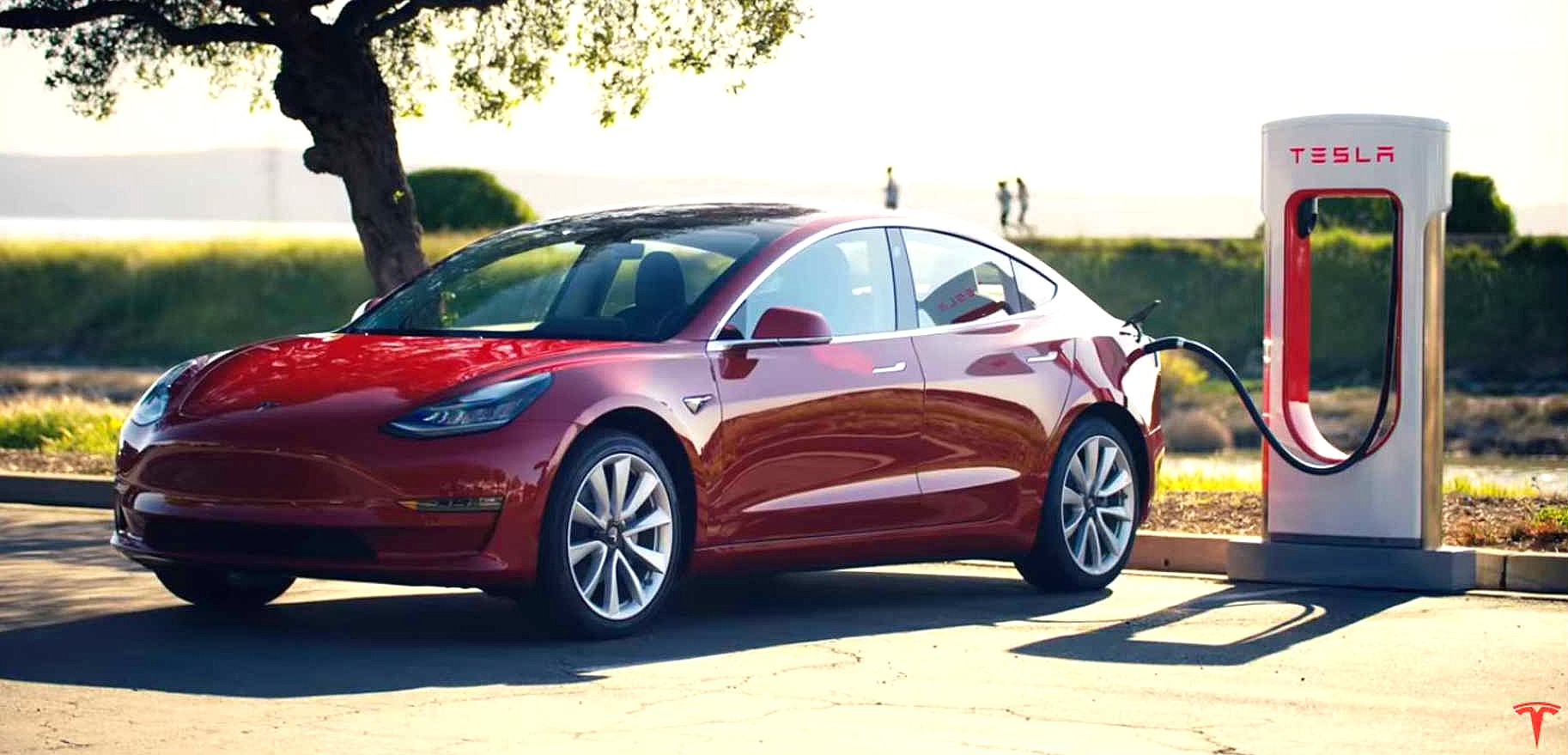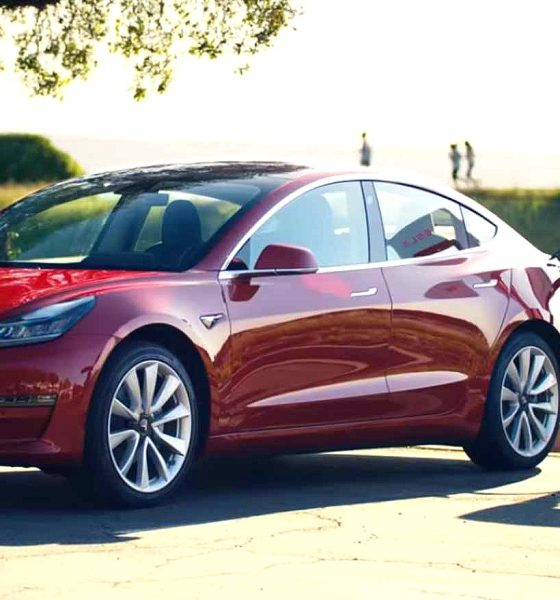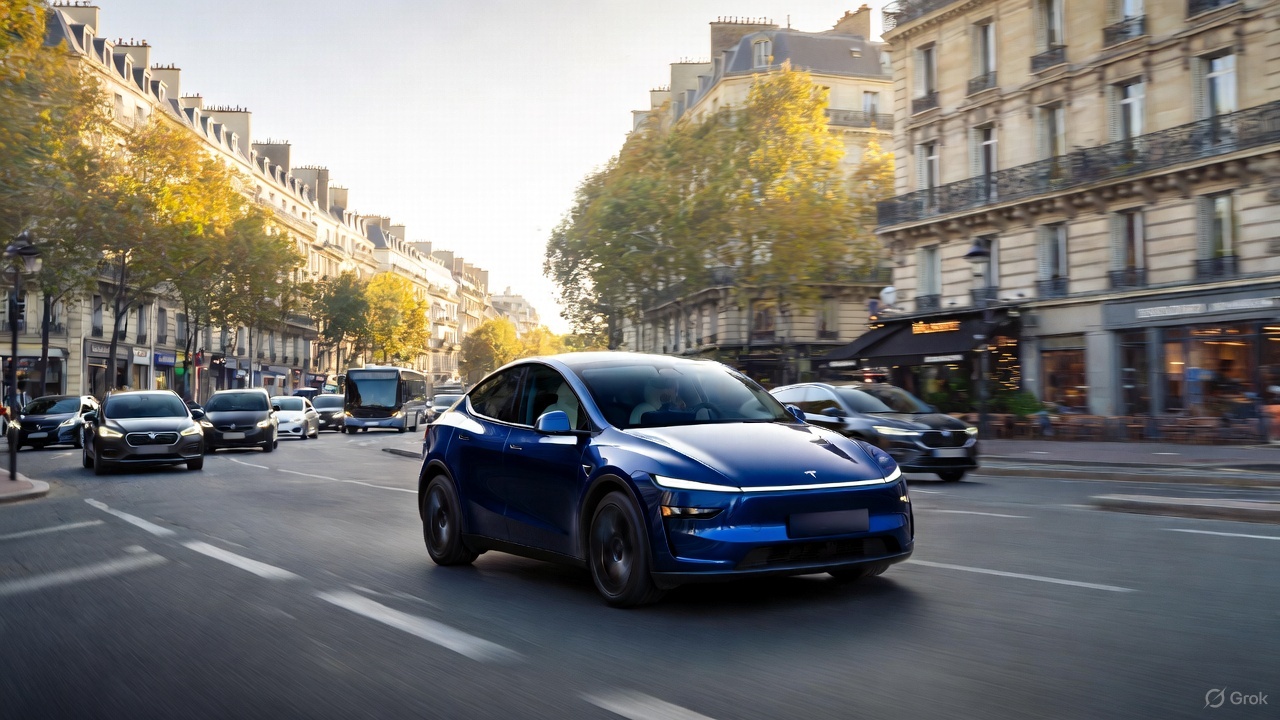

News
Tesla Superchargers are now over 3x cheaper than their biggest competitor
Tesla’s Supercharger Network just undercut one of its biggest competitors by over three times, and the company did not even have to lower its prices. In a recent announcement, IONITY, the rapid charging network that is considered as VW, BMW, Daimler, and Ford’s answer to the Tesla Superchargers, revealed that it would be updating its pricing structure by the end of the month — and what an update it is.
In a press release, IONITY stated that it would be launching a kilowatt-hour-based pricing scheme for customers across its established pan-European network starting January 31, 2020. The new rate is simple, with the company charging customers per kWh. The only issue is that IONITY will be charging electric car drivers 0.79 EUR ($0.88) per kWh.
That’s a substantial premium compared to the Tesla Supercharging Network, which has a rate of about 0.25 EUR ($0.28) per kWh. Thus, with this new pricing structure in place, an Audi e-tron or Porsche Taycan owner would end up paying about $80 to charge the all-electric SUV from zero to 100%. Considering that these vehicles are capable of traveling just over 200 miles on a charge, IONITY’s updated prices will make long trips on electric cars far more expensive than before.
IONITY boss Michael Hajesch, for one, noted that he does not think the new pricing strategy will turn customers away from using the network. In an interview with Handelsblatt‘s EV publication Edison Media, the IONITY executive explained that the rapid charging network’s advantages would likely be worth it for electric car drivers.
“I don’t have that fear. It is important to mention that the connected mobility service providers – and in this case, also include the Porsche charging service and BMW ChargeNow – offer attractive end customer offers. Direct customers without a contract benefit from the IONITY service promise, such as high availability, a Europe-wide HPC charging network, top locations directly on the motorway, and responsible operation of the charging stations with green electricity.”
He also argued that such price adjustments would likely not deter the advent of electric mobility. While he admitted that IONITY’s new pricing is high compared to its rivals in the market, Hajesch stated that the decision to raise the network’s prices was not difficult at all, even among its owners, VW, BMW, and Daimler.
“The discussion was not fierce or difficult at all. The price will not deter customers from buying, on the contrary. The overall service promise of the European IONITY HPC network already gives an answer to the key criticisms of the past regarding availability, charging power, green electricity supply, and range anxiety. We are therefore convinced that we are making a significant contribution to the market acceptance of electromobility.
“The purchase decision will not only depend on the IONITY price point on the long-haul route, which only accounts for five to ten percent of the annual charging needs. You also have to take into account the other use cases at home/work and public charging, which can already result in advantages over diesel and gasoline,” he said.
Despite the IONITY boss’ arguments, the fact remains that EV owners now need to pay far more to charge their vehicles using the rapid charging network. This will likely deter electric car owners who are budget conscious, and it might very well incentivize the ownership of internal combustion cars once more. After all, why buy an Audi e-tron that takes about $80 to fill up when a comparable gas or diesel-powered SUV can fill up for far less?
That being said, this update in IONITY’s pricing also highlights the practicality of Tesla’s Supercharger Network, which charges about $0.28 per kWh. Tesla’s Superchargers currently top out at 250 kW, which is less than IONITY’s peak of 350 kW, but considering the price difference, electric car owners will likely take the slightly slower charging speed and be charged a rate that is several times more affordable.
It’s unfortunate, but for now, at least, it appears that the only rapid charging network that is seriously going for petrol’s jugular is Tesla and is Superchargers.

News
Man credits Grok AI with saving his life after ER missed near-ruptured appendix
The AI flagged some of the man’s symptoms and urged him to return to the ER immediately and demand a CT scan.

A 49-year-old man has stated that xAI’s Grok ended up saving his life when the large language model identified a near-ruptured appendix that his first ER visit dismissed as acid reflux.
After being sent home from the ER, the man asked Grok to analyze his symptoms. The AI flagged some of the man’s symptoms and urged him to return immediately and demand a CT scan. The scan confirmed that something far worse than acid reflux was indeed going on.
Grok spotted what a doctor missed
In a post on Reddit, u/Tykjen noted that for 24 hours straight, he had a constant “razor-blade-level” abdominal pain that forced him into a fetal position. He had no fever or visible signs. He went to the ER, where a doctor pressed his soft belly, prescribed acid blockers, and sent him home.
The acid blockers didn’t work, and the man’s pain remained intense. He then decided to open a year-long chat he had with Grok and listed every detail that he was experiencing. The AI responded quickly. “Grok immediately flagged perforated ulcer or atypical appendicitis, told me the exact red-flag pattern I was describing, and basically said “go back right now and ask for a CT,” the man wrote in his post.
He copied Grok’s reasoning, returned to the ER, and insisted on the scan. The CT scan ultimately showed an inflamed appendix on the verge of rupture. Six hours later, the appendix was out. The man said the pain has completely vanished, and he woke up laughing under anesthesia. He was discharged the next day.
How a late-night conversation with Grok got me to demand the CT scan that saved my life from a ruptured appendix (December 2025)
byu/Tykjen ingrok
AI doctors could very well be welcomed
In the replies to his Reddit post, u/Tykjen further explained that he specifically avoided telling doctors that Grok, an AI, suggested he get a CT scan. “I did not tell them on the second visit that Grok recommended the CT scan. I had to lie. I told them my sister who’s a nurse told me to ask for the scan,” the man wrote.
One commenter noted that the use of AI in medicine will likely be welcomed, stating that “If AI could take doctors’ jobs one day, I will be happy. Doctors just don’t care anymore. It’s all a paycheck.” The Redditor replied with, “Sadly yes. That is what it felt like after the first visit. And the following night could have been my last.”
Elon Musk has been very optimistic about the potential of robots like Tesla Optimus in the medical field. Provided that they are able to achieve human-level articulation in their hands, and Tesla is able to bring down their cost through mass manufacturing, the era of AI-powered medical care could very well be closer than expected.
News
Tesla expands Model 3 lineup in Europe with most affordable variant yet
The Model 3 Standard still delivers more than 300 miles of range, potentially making it an attractive option for budget-conscious buyers.

Tesla has introduced a lower-priced Model 3 variant in Europe, expanding the lineup just two months after the vehicle’s U.S. debut. The Model 3 Standard still delivers more than 300 miles (480 km) of range, potentially making it an attractive option for budget-conscious buyers.
Tesla’s pricing strategy
The Model 3 Standard arrives as Tesla contends with declining registrations in several countries across Europe, where sales have not fully offset shifting consumer preferences. Many buyers have turned to options such as Volkswagen’s ID.3 and BYD’s Atto 3, both of which have benefited from aggressive pricing.
By removing select premium finishes and features, Tesla positioned the new Model 3 Standard as an “ultra-low cost of ownership” option of its all-electric sedan. Pricing comes in at €37,970 in Germany, NOK 330,056 in Norway, and SEK 449,990 in Sweden, depending on market. This places the Model 3 Standard well below the “premium” Model 3 trim, which starts at €45,970 in Germany.
Deliveries for the Standard model are expected to begin in the first quarter of 2026, giving Tesla an entry-level foothold in a segment that’s increasingly defined by sub-€40,000 offerings.
Tesla’s affordable vehicle push
The low-cost Model 3 follows October’s launch of a similarly positioned Model Y variant, signaling a broader shift in Tesla’s product strategy. While CEO Elon Musk has moved the company toward AI-driven initiatives such as robotaxis and humanoid robots, lower-priced vehicles remain necessary to support the company’s revenue in the near term.
Reports have indicated that Tesla previously abandoned plans for an all-new $25,000 EV, with the company opting to create cheaper versions of existing platforms instead. Analysts have flagged possible cannibalization of higher-margin models, but the move aims to counter an influx of aggressively priced entrants from China and Europe, many of which sell below $30,000. With the new Model 3 Standard, Tesla is reinforcing its volume strategy in Europe’s increasingly competitive EV landscape.
News
Tesla FSD (Supervised) stuns Germany’s biggest car magazine
FSD Supervised recognized construction zones, braked early for pedestrians, and yielded politely on narrow streets.

Tesla’s upcoming FSD Supervised system, set for a European debut pending regulatory approval, is showing notably refined behavior in real-world testing, including construction zones, pedestrian detection, and lane changes, as per a recent demonstration ride in Berlin.
While the system still required driver oversight, its smooth braking, steering, and decision-making illustrated how far Tesla’s driver-assistance technology has advanced ahead of a potential 2026 rollout.
FSD’s maturity in dense city driving
During the Berlin test ride with Auto Bild, Germany’s largest automotive publication, a Tesla Model 3 running FSD handled complex traffic with minimal intervention, autonomously managing braking, acceleration, steering, and overtaking up to 140 km/h. It recognized construction zones, braked early for pedestrians, and yielded politely on narrow streets.
Only one manual override was required when the system misread a converted one-way route, an example, Tesla stated, of the continuous learning baked into its vision-based architecture.
Robin Hornig of Auto Bild summed up his experience with FSD Supervised with a glowing review of the system. As per the reporter, FSD Supervised already exceeds humans with its all-around vision. “Tesla FSD Supervised sees more than I do. It doesn’t get distracted and never gets tired. I like to think I’m a good driver, but I can’t match this system’s all-around vision. It’s at its best when both work together: my experience and the Tesla’s constant attention,” the journalist wrote.
Tesla FSD in Europe
FSD Supervised is still a driver-assistance system rather than autonomous driving. Still, Auto Bild noted that Tesla’s 360-degree camera suite, constant monitoring, and high computing power mark a sizable leap from earlier iterations. Already active in the U.S., China, and several other regions, the system is currently navigating Europe’s approval pipeline. Tesla has applied for an exemption in the Netherlands, aiming to launch the feature through a free software update as early as February 2026.
What Tesla demonstrated in Berlin mirrors capabilities already common in China and the U.S., where rival automakers have rolled out hands-free or city-navigation systems. Europe, however, remains behind due to a stricter certification environment, though Tesla is currently hard at work pushing for FSD Supervised’s approval in several countries in the region.








